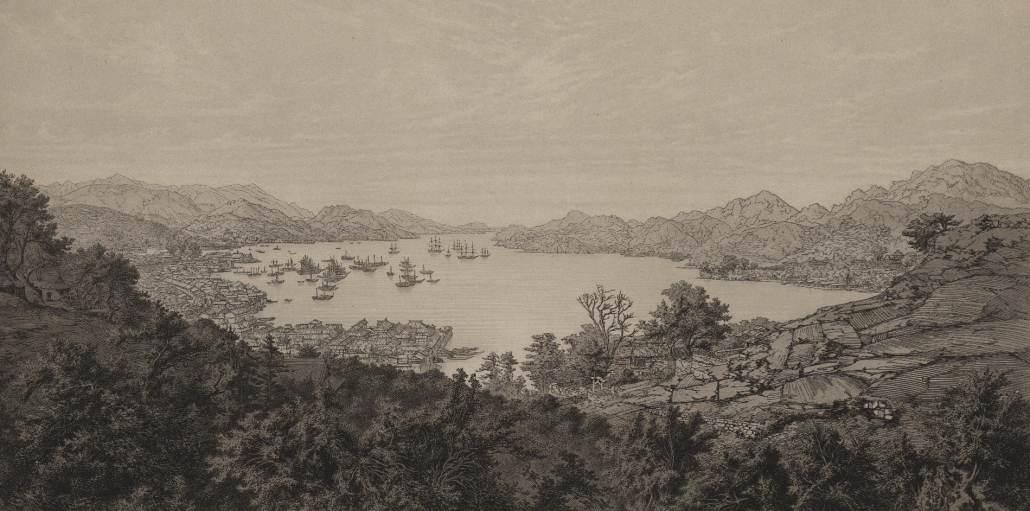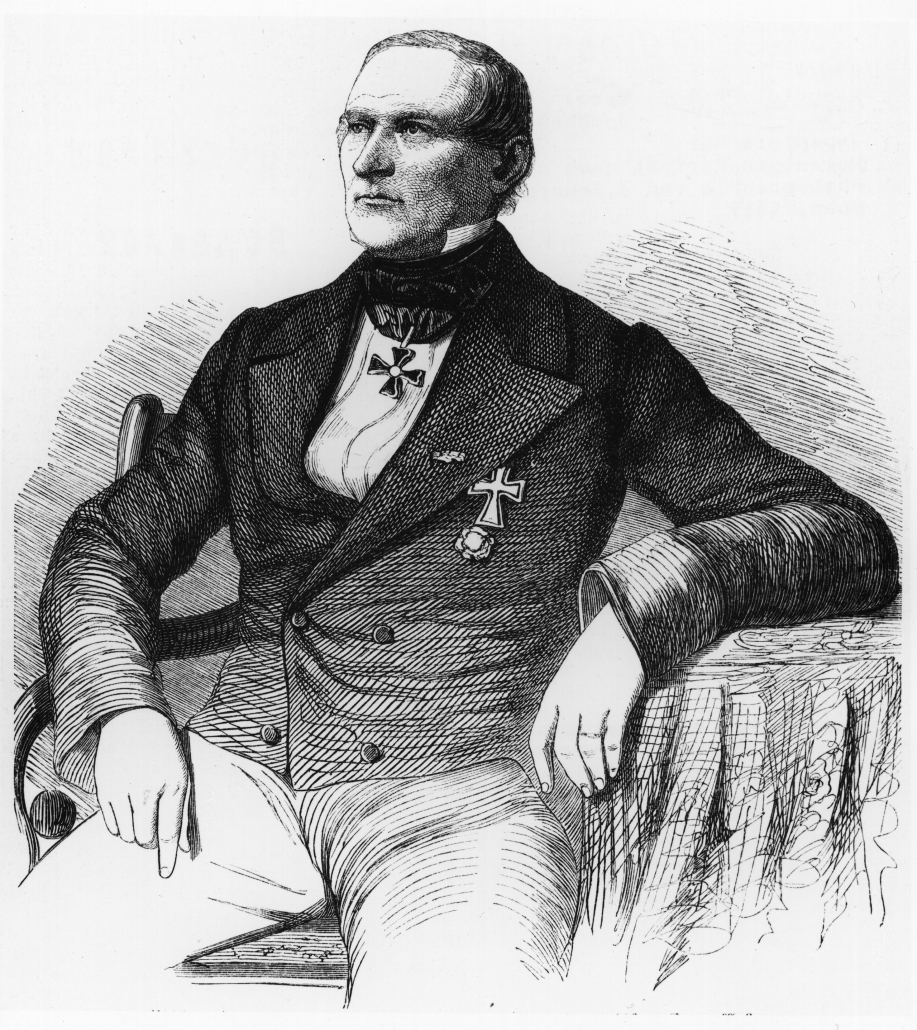The Prussian Expedition to Japan 1860/61
The year 2021 marks the 160th anniversary of the signing of a treaty of “Amity, Commerce and Navigation” between Prussia and Japan. This thematic portal which presents the voyage of the Prussian expedition and the negotiations with the Japanese Shogunate government in 1860/61, was created to commemorate the celebration of “160 Years of German-Japanese Relations“. The German envoy, Friedrich Graf [Count] zu Eulenburg, had secured the agreement after several months of persistent talks and diplomatic wrangling. This contract was completely modeled after the treaties concluded with the other Western countries before. It belongs to the group of unequal treaties that were very much to the disadvantage of Japan. As a consequence of these agreements Japan lost to some extent its sovereignty.
During their stay in Japan, the members of the expedition also purchased books, maps, and picture scrolls, which were intended for the then Royal Library – today’s Staatsbibliothek zu Berlin (SBB-PK). Later, further items from the possessions or the estate of the members of the delegation found their way into the Royal Library. These works constituted the beginnings of the Japanese collection. About 100 items are still extant today. The historical Japanese collection, including the titles that belonged to the expedition members, can today be consulted in the digitised collections of the SBB-PK. Further information regarding the beginnings of the Japanese collection of the SBB-PK can be found in the respective thematic portal.
The following account of the journey of the expedition is based on (unless stated otherwise) the description of Albert Berg in “Die preussische Expedition nach Ost-Asien. Nach amtlichen Quellen [The Prussian expedition to East Asia. Based on the official sources]“ (Berlin, 1864-1873, 4 vols.).
Arrival
Outward Voyage and Arrival in Japan
Friedrich Albrecht Graf zu Eulenburg (around 1865)
Source: bpk / Loescher und Petsch
In the mid-19th century, Prussia decided to dispatch a delegation to China, Japan and Siam (today’s Thailand) in order to conclude treaties of friendship, commerce and shipping and besides to explore these countries from scientific and economic points of view. The background of this endeavour were Prussia’s trade policy and power political interests. Since it had been agreed that these contracts should also include the states of the German Customs Union (Zollverein), the Hanseatic towns of Hamburg, Bremen and Lübeck as well as the Grand Duchies Mecklenburg-Strelitz and Mecklenburg-Schwerin, Prussia acted as the protective power of the German trade interests and thus sent a clear signal to the other major European powers.
America, Great Britain, France, the Netherlands and Russia had already signed contracts with Japan, having thus laid a foundation for the Asia trade, whereas German merchants in Japan could only be active illegally, under the protective cover of other nations. Even though China was being considered the potentially more promising market, an agreement with Japan was still very desirable because it would provide the German merchants who were already active in the country with a safe and legal foundation and would, in general, bring about more flexibility in the Asia trade. At that time, German ships were allowed to call at a Japanese port only in an emergency.
Under the high command of navy Captain Sundewall who was promoted, for the duration of the expedition, to the rank of a Commodore, and in order to enable the legation to be in its conduct as prestigious as possible, an expeditionary squadron was put together, consisting of four ships:
- steamer corvette [Dampferkorvette] “Arkona”, 319 crew members
- sailing frigate [Segelfregatte] “Thetis”, 333 crew members
- schooner [Schoner] “Frauenlob”, 41 crew members
- transport vessel [Transportschiff] “Elbe”, 47 crew members
Apart from the mariners, the legation consisted of the following persons: the leadership was with the Envoy Extraordinary and Plenipotentiary Minister at the Courts of China, Japan, and Siam (today’s Thailand), Friedrich Albrecht Graf [Count] zu Eulenburg (1815-1881). He was accompanied by the secretary of legation, Carl Friedrich Pieschel (1821-1906), and the three attachés, Max von Brandt (1835-1920), Theodor von Bunsen (1832-1892) and his nephew, August Graf zu Eulenburg (1838-1921). As scientists and explorers, the botanist Max Wichura (1817-1866), the zoologist, Carl Eduard von Martens (1831-1904) and the geologist Ferdinand Freiherr [Baron] von Richthofen (1833-1905) took part in the endeavour. Hermann Maron (1820-1882) acted as agricultural expert, and Otto Schottmüller (?-1864) as botanical gardener. In order to document the expedition, the painter Albert Berg (1825-1884), the draughtsman Wilhelm Heine (1827-1885), and the photographer Carl Bismarck (1839-1879, an illegitimate son of Friedrich Albrecht Graf zu Eulenburg) had been commissioned. Since Bismarck’s accomplishments turned out to be less than satisfactory, John Wilson and August Sachtler were signed on in Japan as additional photographers. The economic interests were taken care of by the Prussian merchants Friedrich Wilhelm Grube, Carl Jacob (also: Jakob) and Kommerzienrat [Councilor of Commerce] Fritz Wolff (also: Wolf), as well as Plenipotentiary of the Saxon Chamber of Commerce, the merchant Gustav Spieß (also: Spiess). As medical doctor, Dr. Robert Lucius (1835-1914; raised to the rank of Freiherr [Baron] Lucius von Ballhausen in 1888), was affiliated en route in Ceylon (today’s Sri Lanka) as another member of the expedition.
The equipment, presents and commercial samples were transported by sea to Singapore, which was reached by all four ships by August 1860. However, the majority of the members of the expedition had travelled overland to Singapore, via Suez and Ceylon. It was only there that the delegation regrouped anew for the onward journey, and settled in on-board the Arkona and the Thetis.
The original plan had been to sail, firstly, from Singapore to China. But due to the precarious political situation there – China was at war with England and France in the so-called Second Opium War – it was decided to turn to Japan instead. The Elbe had to stay behind in Singapore for repairs. The three merchants, Jakob, Grube and Wolff, stayed with the Elbe in Singapore, since they planned to present their merchandise samples there. The Arkona, the Thetis, and the Frauenlob set sail for Japan on the 12th and 13th of August, 1860. Nearly a month later, two of the vessels, the Arkona and the Thetis, arrived at their destination, the harbour of Edo, on September 4th and 14th. Unfortunately, the third ship, the Frauenlob, sank with its whole crew during a Taifun on September 2nd, just off the Japanese coast.
Group picture of the members of the expedition: back, f.l.: Gustav Spieß, Albert Berg, middle, f.l.: Wilhelm Heine, Max von Brandt, Envoy Friedrich Albert Graf zu Eulenburg, front, f.l.: Dr. Robert Lucius, attaché August Graf zu Eulenburg, Theodor von Bunsen
Source: Gustav Spieß. Die preußische Expedition nach Ostasien während der Jahre 1860-62. Berlin [u.a.]: Spamer, 1864 (shelf mark: Un 5276a)
In Japan, the delegation encountered a difficult situation, because the treaties which the Japanese had signed earlier with America, Great Britain, France, Russia and the Netherlands, had proven very disadvantageous for Japan. These so called unequal treaties, granted extraterritoriality to the foreigners, i.e., citizens of the contracting states were not under the jurisdiction of the Japanese, but, in the case of offenses committed in Japan, were tried in the consular court of their home country. Likewise, customs were regulated by the treaties so that Japan lost its customs sovereignty and could no longer effectively protect its domestic goods. Furthermore, regulations concerning the exchange of coin lead to overreaching the Japanese. The interference of the foreigners was perceived as patronizing, and the price increases that went along with the contracts due to inflation did their share to kindle resentment. Especially among the Samurai, hostility towards foreigners was widespread. Under the motto “Worship the Emperor, expel the barbarians!” (尊王攘夷, sonnō jōi), a movement formed which during the Meiji restauration would finally lead to the fall of the Shogunate government. Due to concerns about uprisings in their own country, there was only very limited willingness in the Japanese government to conclude further agreements. The Prussian contract of 1861 followed the pattern of these unequal treaties, too. It took a very long time until the Japanese could negotiate a revision of the contracts, and it was only after regaining the customs sovereignty in 1911 that Japan regained its full state sovereignty.
A few days after their arrival in Edo, on September 8th, 1860, the Envoy zu Eulenburg ceremoniously disembarked from the Arkona and traveled – to the sound of a marching band – to the accommodation in Akabane, which he had been provided with by the Japanese side. Due to the bad weather, the parade of the delegation with its marines and sailors did not meet with the public response they had hoped for. In the courtyard, first of all, the Prussian flag was hoisted and thus the Prussians took up residence. Since not all members of the delegation could be accommodated in the building, some found quarters in Yokohama and Kanagawa. Foreign merchants had settled in Yokohama since its harbour was already open for trade; the diplomatic representatives of the Western powers, on the other hand, had their seats in Kanagawa.
Neighbouring the former lodgings of the Prussian delegation in Akanabe, today, there is the little Iikura park (Minato-ku, Higashi Azabu 1-28-8), where two information boards with a historical map of the city have been set up, showing the original position of the former lodgings. The original location of the accommodation in Akanabe (Akabane setsugūsho, Akabane ōsetsusho), today is a built-up area with residential buildings.
The Prussian delegation entering Edo
Source: Gustav Spieß. Die preußische Expedition nach Ostasien während der Jahre 1860-62. Berlin [u.a.]: Spamer, 1864, , unpag. between pp. 140/141 (shelf mark: Un 5276a)
Hoisting the Prussian flag in Akabane
Source: Gustav Spieß. Die preußische Expedition nach Ostasien während der Jahre 1860-62. Berlin [u.a.]: Spamer, 1864, p. 139 (shelf mark: Un 5276a)
View of the likura park
Source: Photograph, Febr. 17th, 2011; SBB-PK/Ursula Flache
Information board about the accommodation Akabane setsugūsho
Source: Photograph, Febr. 17th, 2011; SBB-PK/Ursula Flache
Information board with historical city map
Source: Photograph, Febr. 17th, 2011; SBB-PK/Ursula Flache
Detail, historical city map, showing the location of the accommodation in Akabane directly next to the Iikura park
Source: Photograph, Febr. 17th, 2011; SBB-PK/Ursula Flache
Negotiations
Beginning of the Negotiations
The course of the contract negotiations was very complex and time-consuming since due to the language barrier, direct negotiations were impossible. Nobody in the delegation spoke Japanese, and on the Japanese side, nobody spoke German. Rather, in every conversation, in each exchange of documents, Dutch served as the lingua franca. Also, the contract was finally prepared in three versions, German, Dutch, and Japanese, and it was agreed upon that Dutch would be the valid language in case of disagreement. Being mediators, the interpreters and translators, accordingly held a central position. For the duration of the negotiations, the American consul general [Ministerresident], Townsend Harris (1804-1878), put his interpreter, the Dutch Henry Heusken (1832-1861), at the Prussians’ disposal. Heusken had already been involved in the conclusion of the American and British contracts and, with his open and friendly way, quickly earned the trust and confidence of the Prussians. On the side of the Japanese, Moriyama Takichirō (森山多吉郎, 1820-1871) who had partaken in 1854 in the negotiations with the American Commodore Matthew Perry (1794-1858), acted as interpreter.
On the very day of zu Eulenburg‘s arrival in Akabane, the two commissioners for foreign affairs (外国奉行, gaikoku bugyō), Sakai Oki no kami (= Sakai Tadayuki, 酒井隠岐守 = 酒井忠行, dates unknown) and Hori Oribe no Shō (also: Hori Oribe no kami = Hori Toshihiro, 堀織部正 = 堀利煕, 1818-1860), paid zu Eulenburg their courtesy visit. They made an effort to persuade him to start negotiations with them right away, but zu Eulenburg insisted on direct talks on government level. He was aware that the commissioners for foreign affairs held no equivalent position to be his counterparts. Accordingly, the following two meetings with Sakai and Hori on September 10th and 13th were also spent with polite small talk and culinary delights.
Group photograph, Zenpukuji temple, where the American Embassy was housed, including interpreter Heusken (fourth from left), and consul general, Townsend Harris (fifth from right)
Source: Courtesy of Shimoda Kaikoku Hakubutsukan (Shimoda History Museum)
On September 14th, a first encounter took place between zu Eulenburg and Andō Tsushima no kami (= Andō Nobumasa, 安藤対馬守 = 安藤信正, 1820-1871) who, as a member of the council of elders (老中, rōjū), conducted the negotiations on behalf of the Shogunate government. Their first meeting in the residence of Andō was celebrated with great ceremony according to diplomatic protocol. Andō pointed out all the disadvantages which the earlier contracts had for Japan and expressed with regret that for this reason another contract was not acceptable. Zu Eulenburg argued against it that Prussia must not be disadvantaged compared with the other Western powers and that the more contracts Japan would sign, the faster the situation would normalize. Since both parties insisted on their points of view, they departed without any results. It was only agreed that the commissioners for foreign affairs would in a few days explain the Japanese point of view once more.
As agreed, on September 18th, Sakai and Hori appeared again before zu Eulenburg. They repeated the arguments of the Japanese side and presented two documents with an accompanying Dutch translation in which the reasons for refusal were set forth. These papers today are in the holdings of the SBB-PK. They are introduced in closer detail here.
On the 21st of September, the visit of the commissioners for foreign affairs was repeated and again, the well-known arguments were exchanged. Zu Eulenburg insisted on the equal treatment of Prussia and the other Western powers. The commissioners pointed out in all politeness and to their regret that the current situation did not allow anything else. In order to get the stalled negotiations going again, zu Eulenburg finally declared that he would discuss “business matters” with the commissioners only if and when they were equipped with a mandate to discuss the treaty (cf. [Albert Berg]. Die preussische Expedition nach Ost-Asien. Nach amtlichen Quellen. Berlin, 1864, vol. 1, p. 348). Other than that, they were of course always welcome to visit him. Simultaneously, he demanded a new meeting with Andō. Sakai and Hori promised to bring the request of zu Eulenburg to the attention of Andō. The visit finally came to a pleasant end with champagne, pastries and chat.
Portrait of Moriyama Takichirō (after a photograph by A. Sachtler)
Source: Detail, Illustrirte [sic] Zeitung. Leipzig, 935 (1. Juni 1861), p. 373 (shelf mark: 2″ Ac 7169-36/37=914/965, + Beil. 1861)
In their talks with Andō, the representatives of America, France and England also advocated zu Eulenburg’s request whenever there was the opportunity to do so. It was from them that zu Eulenburg received valuable advice regarding his negotiation strategy and helpful information, such as the news that only quite recently the British envoy had been given the promise by the Japanese that they would sign contracts with Switzerland and Belgium as soon as a treaty was concluded with another state. This meant that if the Japanese were to give in to zu Eulenburg’s request, agreements with Switzerland and Belgium would have to follow, – what obviously was not in the interests of Japan. For zu Eulenburg, this explained the persistent resistance of the Japanese. Still, he did not allow this complication to daunt him.
On September 24th, the commisioners brought news that Andō would receive zu Eulenburg on October 4th. This meeting was finally brought forward to Oktober 2nd. The negotiations lasted for three hours and again, both sides pulled out all the stops of their negotiating skills. Andō confirmed his standpoint, declaring that it was impossible to make any promises beyond a written confirmation to sign a contract at some later time, as soon as public opinion on this topic would have changed. He emphasized that for him, tensions within his country posed a bigger threat than a possible rift between Japan and the Western powers. Zu Eulenburg did not allow himself to be fazed by these objections.
Portrait of Andō Tsushima no kami
Source: Picture provided courtesy of Andō Ayanobu
In order to avoid a final termination of the negotiations, zu Eulenburg feigned exhaustion and promised to formulate a written answer, on the basis of which the talks should be continued. While Andō tried to refuse this on the grounds that he was too busy for further negotiations, zu Eulenburg elegantly enforced confirmation of a further meeting by pointing out that Andō could not evade this duty due to his responsibility as the foreign minister.
For the Prussian delegation, October passed mostly with waiting. In the report based on the official sources, numerous excursions and undertakings during this time are mentioned. On Oktober 15th, the German envoy presented Sakai and Hori with a collection of Prussian weigths and measures, as a present for the Shōgun, which was received in due honour. During the subsequent breakfast, the name of the attaché, Max von Brandt, was mentioned. Immediately, Sakai and Hori enquired if he eventually might be related to the author of a work on military tactics that was famous in Japan. They were pleased to learn that Max von Brandt was, in fact, his son.
This book written by Heinrich von Brandt (1789-1868) was titled “Die Grundzüge der Taktik der drei Waffen [Fundamentals of the tactics of the three weapons]”, published originally in 1833. It was translated initially into the Dutch language, and then, from the Dutch into Japanese. Hori presented Max von Brandt on December 4th with a Japanese edition of this work which is today kept in the SBB-PK. For more information on the items from the possession of Max von Brandt, please refer to the related Thematic Portal.
During another meeting with the commissioners for foreign affairs, a celestial and an earth globe were presented as gifts for the Shōgun. Sakai and Hori, too, received on each occasion of a visit little tokens of appreciation, such as lead pencils, rubber erasers, Champagne, amber pearls and, steel products.
Title page of “Grundzüge der Taktik der drei Waffen“
Source: Brandt, Heinrich von. Grundzüge der Taktik der drei Waffen. 2. verb. u. verm. Aufl. Berlin: Herbig, 1842 (shelf mark: Hv 597-6,1a)
Schematic representation of a combat formation
Source: Brandt, Heinrich von. Grundzüge der Taktik der drei Waffen. 2. verb. u. verm. Aufl. Berlin: Herbig, 1842, p. 85 (shelf mark: Hv 597-6,1)
The same representation of a combat formation in the Japanese translation, “Sanpei takuchiki“
Source: Heinrich von Brandt. Sanpei takuchiki 三兵答古知幾, Edo, 1857, vol. 4, p. 21r (shelf mark: Libri japon. 14)
Already on October 12th, zu Eulenburg had dispatched to Andō another letter in which he insisted on the fulfillment of an earlier promise of the Japanese to the Dutch, stating that there were no more obstacles to the conclusion of contracts with further countries. Since, from the Japanese perspective, these assurances had already been fulfilled by a later contract with the Dutch, zu Eulenburg’s argumentation stood on shaky ground.
Different fortunate circumstances however furthered the Prussian agenda. The representatives of the other Western countries advocated strongly zu Eulenburgs concerns. Around the end of October, the Dutch consul general in Nagasaki addressed an urgent letter to Andō, calling for his full compliance with the promises made earlier. In the course of October, the French, the American and the British representatives had conversations with Andō, in which the Japanese side requested, in order to avoid more unrest among the population, to delay for a few years the opening of further ports, which according to the existing contracts actually was due. Although, from the perspective of the Western countries, specifically the opening of the port of Edo was considered problematic, they were unable to concede this in the negotiations since to do so would have weakened their negotiating strategy. In the meeting of the British consul Alcock, Andō finally suggested that if the Western powers agreed to a postponement of the port openings, the Japanese in turn would take a contract with Prussia into consideration. It goes without saying that Alcock could not accept these terms and in return demanded the conclusion of a contract with Prussia without the compensation by the other powers. Nevertheless, this proved to be an important breakthrough in the negotiations.
Depiction of drunken sailors in Yokohama
Source: Utagawa Sadahide. Yokohama bunko 横浜文庫. S.l.: s.a., vol. 1, pp. 11v, 12r (shelf mark: 39085 ROA)
At the same time, the often improper behaviour of foreign merchants, sailors and soldiers from different nations again and again led to problems with the local authorities. Insults, assaults, rude manners – especially when drunk – against the Japanese population were frequent. The foreigners were under the jurisdiction of their national representatives and so, the in many cases mild penalties for delicts in the end also led to tensions between the diplomats and the Japanese government, because law interpretation and law conventions usually differed. Especially, offence against the ban of hunting around the capital of Edo – hunting there was the prerogative of the Shōgun – was a cause for many conflict situations.
Crest of the Tokugawa family
Source: Kaei bukan 嘉永武鑑. S.l., Kaei 6 [1853], unpag. p. before 1r (shelf mark: Libri japon. 22-1)
It was only in Mid-November, hence, after a full month of waiting, that Andō answered zu Eulenburg’s note of October, 12th. The first insisted on his standpoint that a conclusion of a treaty was impossible under the given circumstances, and he renewed his offer of a written confirmation to sign a contract at a (to be) specified later time. The impasse continued, because in his reply, the latter undeterredly insisted on the legal equalization of Prussia with the other nations.
In early November, the commissioner for foreign affairs, Sakai Oki no kami, was transferred to the position of finance magistrate (勘定奉行, kanjō bugyō). His successor, Misoguchi Sanuki no kami (= Misoguchi Naokiyo, 溝口讃岐守 = 溝口直清, 1807 – year of death unknown), had introduced himself to the Prussians on November 13th in the company of Hori, only to change to a different post immediately afterwards. Therefore, on December 4th, Hori appeared alone to deliver the presents of the Shōgun for the Prussian Regent: ten crates with red and white silken cloth and two preciously executed braziers. Zu Eulenburg was also presented with small presents made from bronze and lacquer – favours he returned with amber and agate items. At the same occasion, another gift of the Prussian Regent was presented: a stamp press for printing the crest of the Tokugawa family (aoi tomoe, mitsuba aoi) which the Shōgun came from. Upon inquiry of the botanist Wichura who was present at the occasion, it was clarified that the plant represented in the crest showed three leaves of the Japanese variant of wild ginger (Japanese: futaba aoi, Latin: Asarum caulescens Maxim, German: Haselwurz). Until then, other extant descriptions and attributions by Japan scholars had named various different plants as the template pattern for the crest.
Portrait of Max Wichura
Source: Max Wichura. Aus vier Welttheilen : ein Reise-Tagebuch in Briefen. Breslau: Morgenstern, 1868, unpag. (shelf mark: Un 5270)
In the conversations between zu Eulenburg, Hori, and Wichura, both sides tried to find out more about the state of affairs in the respective other countries. Accordingly, topics of conversation were wide-ranging – from cactuses or the school system to the postal service system – and time and again, the military, weaponries and shipping came up. When the language skills proved inadequate, they had to make do with paper and pencil. Mutual curiosity was great.
On December 3rd, the last ship of the expedition fleet, the transport ship Elbe, under the command of Lieutenant Werner, finally arrived. Due to adverse circumstances, the Elbe had left Singapore late, and arrived, after stopovers in Hong Kong, Formosa (today’s Taiwan) and Nagasaki, finally in Yokohama. Councellor of Commerce Wolff had already left the delegation in Hong Kong and continued, with his load of product samples, on to Shanghai. The merchant Jacob also had gone aboard a British steamer in Hong Kong and arrived only shortly before the departure of the Prussian fleet from Yokohama in that city.
Treaty
Conclusion of the Treaty and Departure
Finally, in early December, the deadlocked negotiations took a favourable turn for Prussia. The wish of the Japanese to postpone the impending opening of further ports for foreign trade was so strong that, after another consultation with the Shōgun, they finally agreed to further concessions. During a conversation on December 6th with the American consul general Harris, Andō announced that they would enter into contract negotiations with Prussia (and as a consequence also with Belgium and Switzerland). This was on the condition that the requested postponement of the openings of harbours would be reconsidered favourably and furthermore, that the present contracting powers would promulgate a manifesto of the Japanese government to the effect that Japan does not intend to sign further treaties. Initially, Andō had wanted to negotiate further conditions with regard to the contents of the contract with Prussia, but Harris represented the Prussian interests with so much dedication that Andō finally agreed to a treaty following the present examples. The only concession to the Japanese was that the contract should become effective only after the exchange of the instruments of ratification, which in effect was a delay. On the one hand, this success, from the perspective of Prussia, had a certain aftertaste because it had been achieved only with the concessions of the other Western powers with respect to the opening of harbours; on the other hand, zu Eulenburg’s relief was great. After long periods of waiting and frustration, in the end, his mission had been successful.
Accordingly, the delegation’s overall mood was extremely good. On December 15th, the success was celebrated with an excursion to the temple district in Senzoko, where zu Eulenburg invited the American consul general Harris and the American consul E. M. Dorr to enjoy breakfast with him.
The members of the Prussian delegation spent the month of December with further exploration of Edo and its surroundings with excursions and shopping sprees. Several European guests paid zu Eulenburg courtesy visits, such as the Dutch consul general, De Witt, from Nagasaki. The time was also used to employ the Prussian ships to hydrographically survey the waters in and around the bay of Edo. An exuberant Christmas celebration added to the elevated atmosphere.
According to the caption text, a „Sinto-Temple near Senzoko“
Source: [Albert Berg (Hg.)]. Ansichten aus Japan, China und Siam. Berlin, Verlag der Kgl. Geheimen Ober-Hofbuchdruckerei, 1864, ill. 7 (shelf mark: 2″ Libri impr. rari 617)
Until the start of the actual treaty negotiations, again, quite some time passed, as it was only during the exchange of the authorizations on December 13th, that the Japanese finally realized for whom altogether zu Eulenburg intended to negotiate. He had the instruction to conclude a contract for North Germany, implying that Prussia represented a trade-political unity with the German Customs Union states and the Hanseatic League cities. In order to illustrate this request, a map had been prepared accordingly, and a Dutch version of the treaty had been drafted which included Prussia, the German Customs Union states, the two Grand Duchies of Mecklenburg and, the cities of the Hanseatic League. When the Japanese representatives – the commissioners for foreign affairs, Hori, the inspector (metsuke) Kurokawa Satsu (黒川左中, dates unknown), and the newly-appointed Takemoto Zusho no kami (= Takemoto Masatsune, also: Takemoto Kai no kami, 竹本図書頭 = 竹本正雅 (竹本甲斐守), 1825-1868) – realized this, they were very surprised, not to say shocked, that a contract was to be signed by the Japanese with so many states, and all of them together.
This was also Hori’s last encounter with the Prussians. Only shortly thereafter, he committed ritual suicide. Until today, the exact reason for this action has not been ascertained. The general assumption is that the reason for the suicide could be found in the context of the negotiations with the Prussian delegation. Hori maybe felt himself responsible for not having realized right away that zu Eulenburg was not just speaking on behalf of Prussia, but for a multitude of states. The Prussian delegates were initially told that Hori had fallen ill and therefore could not take part in the consultations. It was in January only that his death was announced to the Prussians while it was still maintained that he had succumbed to an illness, although at that time there were already rumours about a suicide.
The bay of Edo
Source: Gustav Spieß. Die preußische Expedition nach Ostasien während der Jahre 1860-62. Berlin [u.a.]: Spamer, 1864, p. 131 (shelf mark: Un 5276a)
Negotiations were resumed on December 22nd. Muragaki Awaji no kami (= Muragaki Norimasa, 村垣淡路守 = 村垣範正, 1813-1880) who took over Hori’s seat, had himself just returned from a delegation to the United States of America. Muragaki had explained to him in detail, by consulting the map, for which states zu Eulenburg intended to negotiate and why Prussia was entitled to speak for them. Nevertheless, the Japanese felt deceived. Muragaki declared that it would be impossible to agree to the conclusion of a contract with so many states simultaneously. Zu Eulenburg tried to point out the advantages of such a procedure: Instead of having to negotiate with all Northern German states individually, there would be only one contract necessary and only one diplomatic representative would be posted to Japan. Actually, only five of the states would engage in maritime trade, so the number of ships coming to Japan would be very low. Alas, zu Eulenburg’s efforts were to no avail. It was impossible to convey the concept of a treaty with such a customs- and trade-union to the Japanese.
On December 24th, zu Eulenburg had another conversation with Andō. The Prussian envoy did everything in his power to ensure that the negotiations would be extended to the German Customs Union states, and even had brought coins from these states with him to illustrate his arguments, but it was impossible to persuade Andō to make any further concessions. According to Andō, the Shōgun had expressed his consent for negotiations with Prussia only. Merely concerning the German merchants already present in Japan, a compromise was made. Since zu Eulenburg promised to effect a postponement of the ratification of the contracts and the dispatching of a diplomatic representative, Andō in turn agreed to a temporary toleration of those Prussian merchants who were already established there. Non-Prussian German merchants should at least be tolerated for an extended period to close their deals. Finally, on December 28th, the real consultations on the contract began. As the parties followed the example of the treaties already in existence, there were no difficulties worth mentioning, and in the second meeting on December 30th, they already achieved an agreement about the content. The trade regulations were negotiated separately, after this meeting.
Caption: „Group of Prussian marines under the command of Lieutenant von Imhoff on guard in Akabany [recte Akabane], Yeddo, to protect the Prussian legation. After a photography by A[ugust] Sachtler.“
Source: Illustrirte [sic] Zeitung. Leipzig, 933 (18. Mai 1861), S. 336 (shelf mark: 2″ Ac 7169-36/37=914/965,+Beil.1861 )
The year 1860 ended for the Prussian delegation with a few minor incidents which luckily ran a mild course. A fire in the kitchen on December 30th could be extinguished in time, so that only little damage was done. Also, a small earthquake in the afternoon on New Year’s Eve passed with no serious consequences, so that the new year could be welcomed at night with games, laughter and song. The new year, however, started with bad news. Heusken, the interpreter, showed up and reported that the Japanese government had learned about a conspiracy of 600 masterless Samurai who were planning an attack against the foreigners in Yokohama and Edo. The Japanese thereupon massively reinforced the security measures around the Prussians’ quarters. The numbers of marines in Akabane were also raised, and onboard the Prussian warships everybody was on alert to assist the delegation on land, if need be.
Amongst the foreign diplomats there was disagreement on how serious the threat was to be taken. Some saw the measures adopted by the Japanese government as an attempt to intimidate the diplomats and to enforce their relocation to an allegedly “safer” place, which was perceived as supervision and a limitation of the freedom of movement. Other diplomats took the concerns of the Japanese officials for real und the threat absolutely for genuine. Temporarily, the Prussians indeed limited their activities. But since there happened no attack, they finally returned to their usual life.
Nakanohashi bridge in today‘s Minato district
Photo taken on February 17 th, 2011, SBB-PK/Ursula Flache
On January 3rd, the negotiators met to take up again the talks about the trade regulations. Merely the question of when the treaty should come into effect posed a certain problem. In order to calm down the situation in their own country, the Japanese side attached great importance to a delayed ratification. After some discussions, it was agreed upon the contract becoming effective only after the exchange of the ratification documents on January 1st, 1863. Until January 8th, the parties had also reached an understanding on the exact wording of the Dutch version of the treaty.
After the threatening beginning of the year, the mood relaxed noticeably. Interpreter Heusken often met with members of the Prussian and other legations for cheerful dinners. Last presents for the Shōgun were being prepared which were scheduled to be presented ceremonially on January 15th. These presents included a life-sized portrait of the Prussian regent and a telegraph apparatus. On the day preceding the presentation, the delegation invited the other foreign representatives for breakfast. The Dutch version of the contract which had been formulated by Heusken and Moriyama was duly appreciated. In high spirits and fine weather, they all went for a ride together, and in the evening, Heusken stayed on with the Prussians.
On January 15th, finally, the gifts were presented and explained to the Japanese chief negotiators. As it turned out, the Japanese version of the contract had not been finalized due to translation problems, contrary to the agreement. But since the presents had been received ceremonially, and the attempts of the authorised Japanese representatives to effect last minute changes in the Dutch text at this stage had been bluntly rejected by zu Eulenburg, the Prussians were confident that there stood nothing in the way of the signing of the treaty. As he had done so often before, Heusken – who not only had earned his merits with his accuracy as a translator but who had in the meanwhile also become a friend – spent the evening in the company of the Prussian delegation.
Heusken‘s funeral cortege
Source: Gustav Spieß. Die preußische Expedition nach Ostasien während der Jahre 1860-62. Berlin [u.a.]: Spamer, 1864, illus. between p. 208 and p. 209 (shelf mark: Un 5276)
On his way home to the Zenpukuji temple, a mere twenty minutes walking distance away, where the American legation was housed, Heusken and his Japanese companions were attacked. In this assault, Heusken was wounded so badly that he died that very night, despite the efforts of Dr. Lucius who had been called to the scene. The American consul general Harris was left in deep grief. For him, the young Heusken – who would have celebrated his 29th birthday only a few days later – had been like a son. The members of the Prussian delegation were also deeply affected by Heusken’s death. The Japanese government promised an investigation of the crime and payed a compensation of 10.000 Dollars to Heuskens’s relatives. The culprit – or, the culprits – however were never held accountable. Today, a small memorial plate on the Nakanohashi bridge, close to where the attack had occurred, informs about the historic event (today: Minato-ku Higashi Azabu 2-30).
Heusken‘s funeral on January 18th took place under heavy security precautions, because another attack on the funeral cortege was feared. In order to protect the foreigners, the procession was accompanied by five commissioners for foreign affairs on horseback. Fortunately, the ceremony was conducted without any disturbances. Today, Heusken’s grave can still be found in the Kōrinji temple in the Minato district (Minato-ku, Minami Azabu 4-11-25). His gravestone carries the inscription:
„Sacred to the memory of Henry Heusken
Interpreter to the American Legation
in Japan
Born at Amsterdam
January 20, 1832
Died at Jedo
January 16, 1861“
Right next to it is the grave of the Japanese interpreter Denkichi (year of birth unkown – 1860) who had been in the service of the British envoy. He had been murdered as well, a year earlier, in January 1860. While on Denkichi’s gravestone “Japanese assassins” were expressly mentioned, Harris had chosen a neutral wording for Heusken’s gravestone. This implied that Harris gave Heusken a certain complicity in the incident, because every foreigner was aware of the danger of walking in the streets at night.
But yet, Heusken’s death had at last made it clear to the Prussians how serious the situation was. The British, the French, as well as the Dutch representative, who was just at the time visiting Edo, temporarily retreated from the capital back to Yokohama. Only Harris who had still complete trust in the Japanese government, and zu Eulenburg who did not want to risk the signing of the contract, remained there. Taking precautionary measures, the members of the delegation henceforth ventured outside only in armed groups.
Heusken’s grave in the Kōrinji temple
Photo taken on February 17th, 2011, SBB-PK/Ursula Flache
Inscription on Heusken’s gravestone
Photo taken on February 17th, 2011, SBB-PK/Ursula Flache
Denkichi’s grave in the Kōrinji temple
Photo taken on February 17th, 2011, SBB-PK/Ursula Flache
On January 23rd, the authorised representatives announced that the fair copy of the Japanese version had been completed. Zu Eulenburg was ready, too, and had, as agreed upon between him and Andō, prepared the written promise that he would campaign with his government for a delay in the ratification and the posting of a diplomatic representative. But, since the previously agreed-upon consideration of the Japanese, i.e., the written pledge of the interim approval of Prussian merchants and the concession for non-Prussian German merchants to finalise their businesses within a certain period of time, was not presented at this point in time, zu Eulenburg initially refused to agree to the signing of the treaty. Only when the promised documents were handed in later, the ceremonial signing of the agreement took place on the following day in the premises of the Prussian delegation in Akabane. There were four German, two Dutch and four Japanese copies:
„The signing took quite a while, because besides the contract, the trade regulations had to be signed separately, so that every authorised representative had to put down his name twenty times – no small feat for the Japanese, given the fact that, at occasions like this, they executed their signatures each time in a considerable size and expended great effort to paint it as calligraphic art.” ([Berg, Albert (ed.)]. Die preussische Expedition nach Ost-Asien. Nach amtlichen Quellen. Berlin, 1866, vol. 2, p. 162)
To the right, the treaty, signed (f.l.): Zu Eulenburg, Kurokawa, Takemoto and Muragaki. To the left, letter of accreditation [Kreditiv] of the Japanese delegation which visited Prussia in 1862
Source: bpk / Geheimes Staatsarchiv, SPK / Joachim Kirchmair Geheimes Staatsarchiv, Inventar-Nr.: II Nr. S 5102
Finally, presents were exchanged once more. The Shōgun sent precious silk brocade interwoven with gold threads to zu Eulenburg and the dignitaries of the delegation. The Japanese authorised representatives and the interpreter Moriyama were presented by zu Eulenburg with, a.o., opera glasses, watches, and strings of amber, of which the latter items were especially appreciated. After the Japanese officials had left, the Prussians celebrated the conclusion over lunch, even though, due to the loss of Heusken, the atmosphere was not as exuberant as it might have been otherwise. Also, zu Eulenburg considered it a defeat that he had not achieved his purpose to include the German Customs Union states and the Hanseatic cities in the contract. But at least, the situation of the Prussians, and the Germans resident in Japan at that time, had been secured until the contract would become effective.
There never was a personal encounter of zu Eulenburg and the Shōgun. Under the pretense of the Shōgun’s audience chamber still not having been restored after a fire in the castle, zu Eulenburg was not granted a personal meeting to the very end. Thus, he could neither submit to the Shōgun his official letter of accreditation, nor the letter of the Prussian regent to the Shōgun. The British and the French representatives, however, were in fact received by the Shōgun during that period of time in temporary premises, in order to exchange the documents for ratification with these countries.
Caption “Signing of the trade agreement between Prussia and Japan in Yeddo on January 25th. After a sketch by W[ilhelm] Heine”
Source: Illustrirte [sic] Zeitung. Leipzig, 935 (1. Juni 1861), p. 372 (shelf mark: 2″ Ac7169-36/37=914/965,+Beil.1861)
Portraits (after photographs by August Sachtler) of the chief negotiators (f.l.), Muragaki Awaji no kami, Takemoto Zusho no kami, Kurokawa Satsu, Moriyama Takichirō (the names of Kurokawa and Moriyama are reversed in the original caption, cf. explanation to picture VII-41, p. 369 in Dobson, Sebastian and Sven Saaler [eds.]. Unter den Augen des Preußen-Adlers : Lithographien, Zeichnungen und Photographien der Teilnehmer der Eulenburg-Expedition in Japan, 1860-61)
Source: Illustrirte [sic] Zeitung. Leipzig, 935 (1. Juni 1861), p. 373 (shelf mark: 2″ Ac7169-36/37=914/965,+Beil.1861)
View of the city and port of Nagasaki
Source: [Berg, Albert (Hg.)]. Ansichten aus Japan, China und Siam. Berlin, Verlag der Kgl. Geheimen Ober-Hofbuchdruckerei, 1864, Abb. 25 (shelf mark: 2″ Libri impr. rari 617)
Finally, nothing stood in the way any longer for the Prussian expedition to depart. On January 27th, the Japanese authorised representatives came one more time and presented them with the last gifts for the Prussian regent, among them a lacquer cabinet and a magnificent sword. The Prussians paid a parting visit to the American consul general Harris and finally, they went one last time to Heusken’s grave. On the following day, the commissioner for foreign affairs, Torii Echizen no kami (鳥居越前守, dates unknown) came for the official farewell. Amidst snowdrift and gusty winds, the expedition boarded again the ships of their squadron.
Very relieved, zu Eulenburg wrote in a letter to his family: “I cannot convey to you how infinitely comfortable I feel, here in my pleasantly warm cabin, with a beautiful, warm carpet and upholstered chairs, after having foregone for five months more or less everything that might be called ‘comfort’. I am calm inside; and hopefully, the most difficult part of my work is done, and I can relax my nerves that have been taut for so long.” (Eulenburg, Fritz. Ost-Asien 1860 – 1862 in Briefen des Grafen Fritz zu Eulenburg, Königlich Preußischen Gesandten, betraut mit außerordentlicher Mission nach China, Japan und Siam. Berlin, Mittler, 1900, p. 162)
On January 29th, zu Eulenburg, on board the Arkona, left Edo. After a short stopover in Yokohama, where zu Eulenburg hosted a farewell banquet on his ship for the European envoys and consuls, he continued on January 31st on to Nagasaki. The passage was very uncomfortable, in stormy weather. It was only on February 17th that they finally reached the port of Nagasaki and rejoined with the botanist Wichura, who had been there already since the end of December for his studies.
Portrait, Philipp Franz von Siebold
Source: bpk / Woodcut (ca. 1860) after a photograph (1859) by J. Schafgans
The one-week stay in Nagasaki was free from the burden of diplomatic negotiations, and the days were spent shopping, making excursions and being convivial. “During our stay there, one festivity was followed by the next one, hospitality knew no boundaries. One led a true Phaeacians life, and in one house or another, the sound of clinking glasses was always heard until late into the night” ([Berg, Albert (ed.)]. Die preussische Expedition nach Ost-Asien. Nach amtlichen Quellen. Berlin, 1866, vol. 2, p. 189). Even if the quality of the craft products offered in Nagasaki could not keep up with the one found in Edo – many items seemed to the Prussians to be too rough and produced only for the European market – still, the desire to buy was rekindled again: “The long sea voyage had worked up our appetite for haggling again, and so, many a crate wandered on board, to the dismay of the ships’ captains, because there is never enough space onboard a warship.” ([Berg, Albert (ed.)]. Die preussische Expedition nach Ost-Asien. Nach amtlichen Quellen. Berlin, 1866, vol. 2, p. 192.)
Among the many visitors of zu Eulenburg’s was also the famous Japan scholar, Philipp Franz von Siebold (1796-1866) who lived in a house near Nagasaki. Zu Eulenburg describes his encounter with von Siebold in a letter to his family: “He [von Siebold] gives the impression that he himself will never ever return to Europe; he is in love with Japan and the Japanese and he wants to finish his work about them here.” (Eulenburg, Fritz. Ost-Asien 1860 – 1862 in Briefen des Grafen Fritz zu Eulenburg, Königlich Preußischen Gesandten, betraut mit außerordentlicher Mission nach China, Japan und Siam, Berlin, Mittler, 1900, p. 176) After these cheerful days in Nagasaki, the farewell-hour finally arrived for the Prussian delegation. On February 24th, the Arkona and the Thetis set sail to Shanghai. The third ship of the squadron, the Elbe, had already departed to Shanghai from Edo, in order to bring to Europe as swiftly as possible the mail with the report of that, finally, the conclusion of contract had been successful.
Sources
Selected Bibliography Works by Contemporaries ::: [Berg, Albert (Hg.)]. Die preussische Expedition nach Ost-Asien. Nach amtlichen Quellen. Berlin Verlag der Kgl. Geheimen Ober-Hofbuchdruckerei, 1864-1873, 4 vols. ::: [Berg, Albert (Hg.)]. Ansichten aus Japan, China und Siam. Berlin: Verlag der Kgl. Geheimen Ober-Hofbuchdruckerei, 1864 ::: Brandt, Max von. Dreiunddreissig Jahre in Ost-Asien. Erinnerungen eines deutschen Diplomaten ; in drei Bänden. Leipzig: Wigand, 1901 (Vol. 1: Die preussische Expedition nach Ost-Asien : Japan, China, Siam, 1860-1862 ; zurück nach Japan, 1862) ::: Eulenburg, Friedrich zu. Ost-Asien 1860 – 1862 in Briefen des Grafen Fritz zu Eulenburg, Königlich Preußischen Gesandten, betraut mit außerordentlicher Mission nach China, Japan und Siam / hrsg. von Philipp zu Eulenburg-Hertefeld. Berlin: Mittler, 1900 ::: Freitag, Adolf. Japan und die Japaner im Schrifttum der Preussischen Expedition von 1860/62 nach Ostasien. Tokyo: Deutsche Gesellschaft für Natur- u. Völkerkunde Ostasiens; Leipzig: Harrassowitz in Komm., 1942 (Mitteilungen der Deutschen Gesellschaft für Natur- und Völkerkunde Ostasiens ; 33, D) [Reprint: New York : Johnson, 1965] ::: Heine, Wilhelm. Eine Weltreise um die nördliche Hemisphäre in Verbindung mit der Ostasiatischen Expedition in den Jahren 1860 und 1861. Leipzig: Brockhaus, 1864, 2 vols. ::: Heusken, Henry. Japan journal 1855-1861. Transl. and ed. by Jeannette C. van der Corput and Robert A. Wilson. New Brunswick: Rutgers Univ. Pr., 1964 ::: Kreyher, Johannes. Die preußische Expedition nach Ostasien in den Jahren 1859 – 1862. Reisebilder aus Japan, China und Siam. Aus dem Tagebuche von J. Kreyher, ehemal. Schiffsprediger an Bord S.M.S. “Arcona”. Hamburg: Agentur des Rauhen Hauses, 1863 ::: Maron, Hermann. Japan und China. Reiseskizzen entworfen während der Preussischen Expedition nach Ost-Asien. Berlin: Janke, 1863 ::: Ein Matrosen-Tagebuch. In: Marine-Rundschau, 21.1910, pp. 1184-1192 ::: Richthofen, Ferdinand von. Ferdinand von Richthofens Aufenthalt in Japan. Aus seinen Tagebüchern. In: Mitteilungen des Ferdinand-von-Richthofen-Tages 1912. Berlin: Reimer, 1912, pp. 19-185 ::: Spieß. Gustav. Die preußische Expedition nach Ostasien während der Jahre 1860-62. Berlin: Spamer, 1864 ::: Stahnke, Holmer (Hg.). Preußens Weg nach Japan. Japan in den Berichten von Mitgliedern der preußischen Ostasienexpedition 1860-61. München: Iudicium, 2000 ::: Werner, Reinhold. Die preußische Expedition nach China, Japan und Siam in den Jahren 1860, 1861 und 1862. Reisebriefe. Leipzig: Brockhaus, 1863 ::: Wichura, Max. Aus vier Welttheilen [sic]. Ein Reise-Tagebuch in Briefen. Breslau: Morgenstern, 1868
Secondary Literature
::: Dobson, Sebastian. “Photography and the Prussian Expedition to Japan, 1860-61“, in: History of Photography, 33.2009, 2, pp.112-131
::: Dobson, Sebastian und Sven Saaler (Hg.). Unter den Augen des Preußen-Adlers : Lithographien, Zeichnungen und Photographien der Teilnehmer der Eulenburg-Expedition in Japan, 1860-61 = Under eagle eyes : lithographs, drawings & photographs from the Prussian expedition to Japan, 1860-61 = プロイセン・ドイツが観た幕末日本 : オイレンブルク遠征団が残した版画、素描、写真. München: Iudicium, 2011 [This title contains an extensive bibliography, listing also unpublished sources, such as, e.g., the documents in the Geheimes Staatsarchiv – PK, and other contemporary reports; cf. pp. 373-389]
::: Hesselink, Reinier H. “The assassination of Henry Heusken”, in: Monumenta Nipponica, 49.1994, 3, pp. 331-351
::: Krebs, Gerhard (Hg.). Japan und Preußen. München: Iudicium, 2002
::: Martin, Bernd. „Die preußische Ostasienexpedition und der Vertrag über Freundschaft, Handel und Schiffahrt mit Japan (24. Januar 1861)“, in: Krebs, Gerhard (Hg.). Japan und Preußen. München: Iudicium, 2002, pp. 77-101
::: Orth. E. „Die preussische Expedition nach Japan 1860-1861“, in: Mitteilungen der Deutschen Gesellschaft für Natur- und Völkerkunde Ostasiens, 13.1910, pp. 199-236
::: Richter, (Julius Wilhelm) Otto. Die preußische Expedition in Japan (1860 – 1861). Altenburg: Geibel, 1908
::: Salewski, Michael. „Die preußische Expedition nach Japan (1959-1861)“, in: Revue Internationale d’Histoire Militaire, 70.1988, pp. 39-57
佐藤林平「Heuskenの死をめぐって-1-」[Der Tod von Heusken -1-] 慶応義塾大学日吉紀要英語英米文学, (通号 9) 1988, pp. 88-114
佐藤林平「Heuskenの死をめぐって-2-」[Der Tod von Heusken -2-] 慶応義塾大学日吉紀要英語英米文学, (通号 10) 1988, pp. 85-131
佐藤林平「Heuskenの死をめぐって(補遺) 」[Der Tod von Heusken (Ergänzung)] 慶応義塾大学日吉紀要英語英米文学, (通号 12) 1989, pp. 149-162
::: Schmiedel, Otto. Die Deutschen in Japan. München: Kuhn ; [Leipzig : Koehler], 1920
::: Schwalbe, Hans und Heinrich Seemann (Hg.). Deutsche Botschafter in Japan 1860-1973. Tokyo: Deutsche Gesellschaft für Natur- und Völkerkunde Ostasiens, 1974 (Mitteilungen der Deutschen Gesellschaft für Natur- und Völkerkunde Ostasiens; 57)
::: Stahnke, Holmer. Die diplomatischen Beziehungen zwischen Deutschland und Japan 1854-1868. Stuttgart: Steiner, 1987

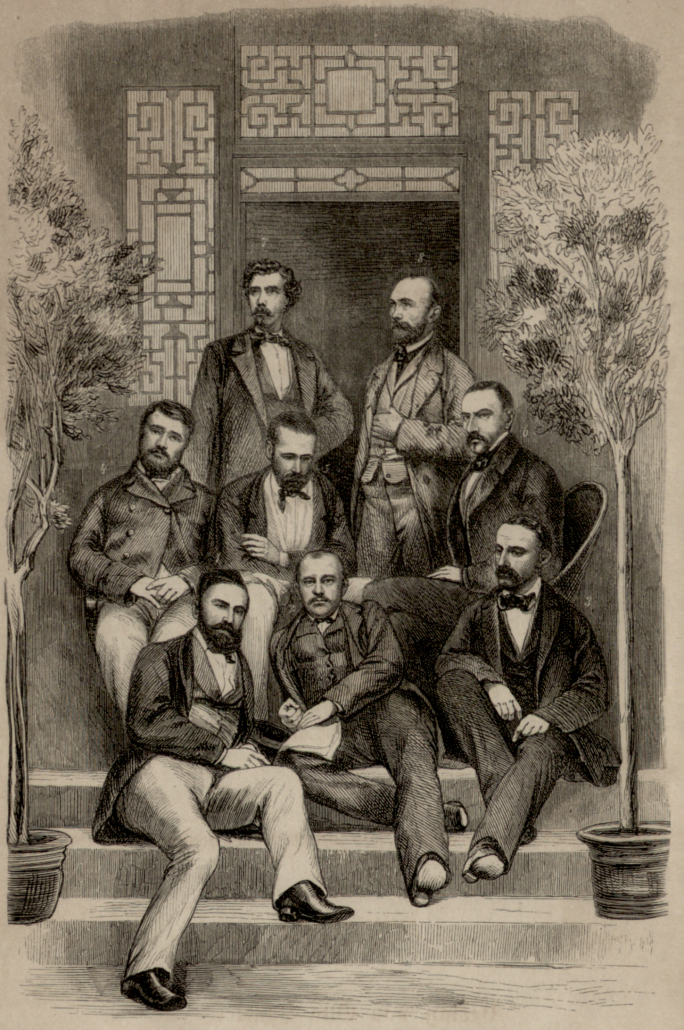
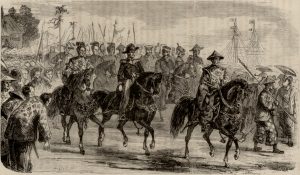
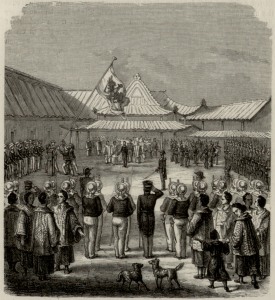
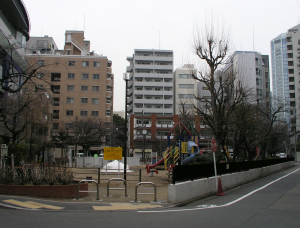
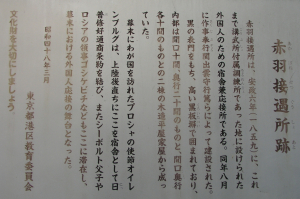
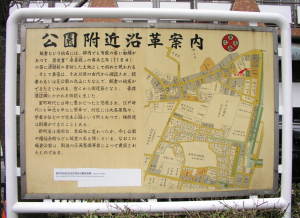
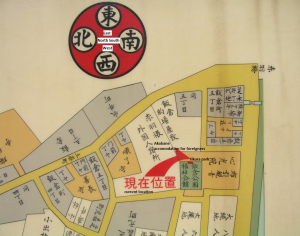
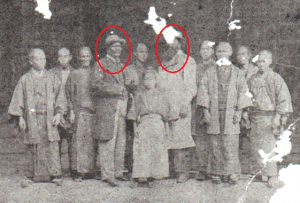
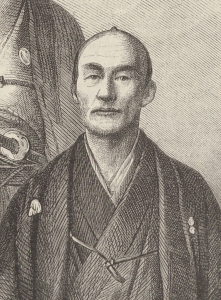
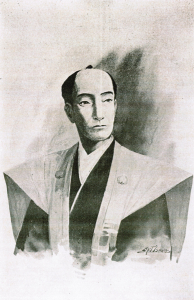
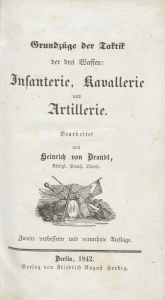
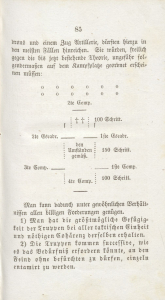
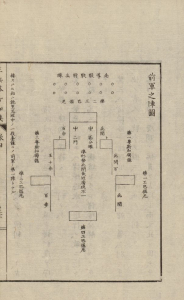
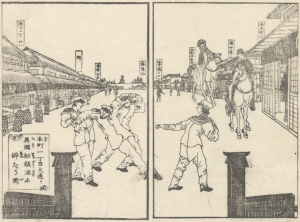
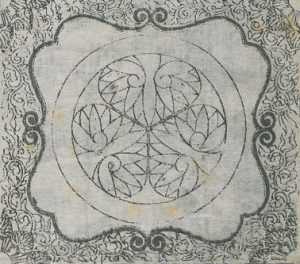
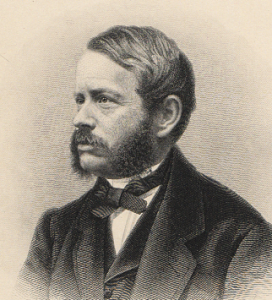
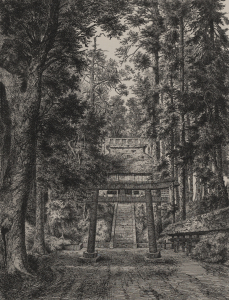
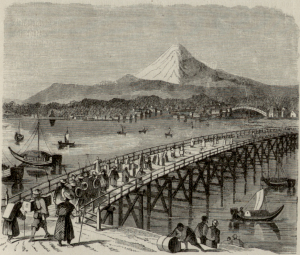
![Caption: „Group of Prussian marines under the command of Lieutenant von Imhoff on guard in Akabany [recte Akabane], Yeddo, to protect the Prussian legation. After a photography by A[ugust] Sachtler.“](https://themen.crossasia.org/wp-content/uploads/Piket_Soldaten-300x216.jpg)
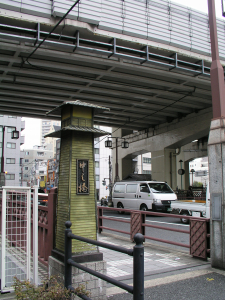
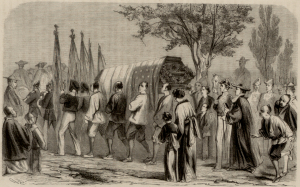
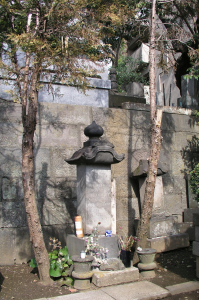
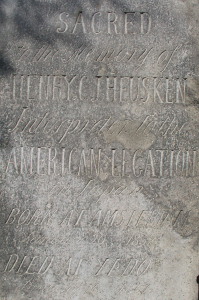
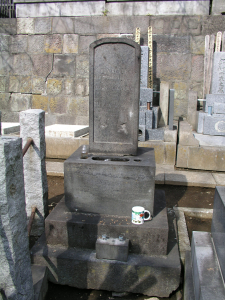
![To the right, the treaty, signed (f.l.): Zu Eulenburg, Kurokawa, Takemoto and Muragaki. To the left, letter of accreditation [Kreditiv] of the Japanese delegation which visited Prussia in 1862](https://themen.crossasia.org/wp-content/uploads/Vertrag_h_00088811-1030x737.jpg)
![According to the caption “Signing of the trade agreement between Prussia and Japan in Yeddo on January 25th. After a sketch by W[ilhelm] Heine”](https://themen.crossasia.org/wp-content/uploads/Unterzeichnung_Vertrag_kleiner-1030x688.jpg)
![Portraits (after photographs by August Sachtler) of the chief negotiators (f.l.), Muragaki Awaji no kami, Takemoto Zusho no kami, Kurokawa Satsu, Moriyama Takichirō (the names of Kurokawa and Moriyama are reversed in the original caption, cf. explanation to picture VII-41, p. 369 in Dobson, Sebastian and Sven Saaler [eds.]. Unter den Augen des Preußen-Adlers : Lithographien, Zeichnungen und Photographien der Teilnehmer der Eulenburg-Expedition in Japan, 1860-61)](https://themen.crossasia.org/wp-content/uploads/Verhandlungsfuehrer-1030x812.jpg)
